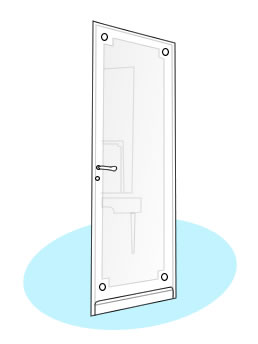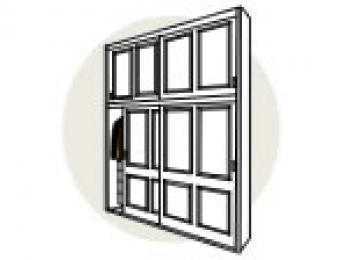
What types of doors are made with mirrors?
Mirrors and mirrored doors are usually found accompanying wardrobes in bedrooms and bathrooms, and can be incorporated as sliding or hinged doors depending on design and purpose. Sliding mirrored doors are better in smaller rooms as they don’t open into the room, but hinged doors are better if you have space to work with as they allow full access to your wardrobe.
Mirrored doors are used because they're able to create the illusion of a whole additional room if they're placed correctly, changing the entire feel of a room.
Another use for mirrors in doors is the use of one way glass in an external glass door. This allows the outside to reflect light like a mirror while still allowing those inside the home to look out. This is a useful way keep your privacy, while increasing the feeling of openness, light and space in your home.
How are mirrored doors constructed?
When creating the doors for a wardrobe, the mirror components are cut flush, mounted and glued on to the face of the door. They are usually affixed to a particleboard or solid wood backing for stability, though occasionally the mirror is just framed with aluminium or UPVC - especially in larger mirrors where weight starts to become an issue.
How do mirrored doors perform?
- Security – Though rarely used externally, mirrored doors are as fragile as glass if unbacked, but if they're supported by a solid backing material they're substantially sronger. One-way mirrored glass for use in an external door is likely to be toughened or laminated for added strength.
- Weatherproofing – Mirrors will resist weather in the same way glass does, but again require regular cleaning to maintain their looks.
- Soundproofing – Unbacked mirror doors will allow sound to travel through rather easily, although those with a thicker backing will absorb or reflect sound better.
- Cost – Adding mirrors to doors will carry a higher cost than leaving them as they are.
- Weight – As mirrors are made of glass, this additional weight factor needs to be planned for when designing doors to avoid hinge sag and other problems.
- Thermal insulation – Mirrored glass is better at refracting heat than non-mirrored glass, but the difference is minimal when comparing the two for the purposes of household heating.

